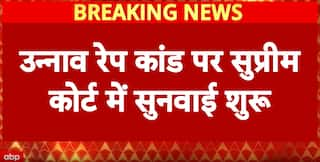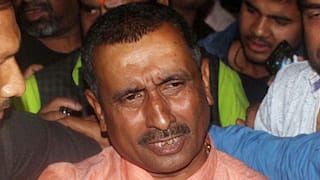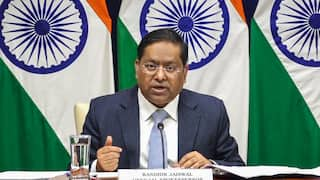Update On Sunita Williams's Return: Boeing Lists Tests Done On Starliner, Says It Will Bring Back NASA Crew Safe
Starliner Return: Boeing confirms Starliner spacecraft's safe return to bring back NASA astronauts Sunita Williams and Butch Wilmore following extensive testing of propulsion systems to address previous issues.

Starliner Return: Boeing Space has provided an update on the return of its Starliner spacecraft, which is to bring back NASA astronauts Sunita Williams and Butch Wilmore who have been in space since the launch of Starliner’s Crew Flight Test (CFT) on June 5. The two astronauts' 10-day mission got extended for an indefinite period after Starliner developed certain issues. The spacecraft has undergone extensive testing of its propulsion system, both in space and on the ground, to ensure a safe and successful return, Boeing has said.
Tests Conducted By NASA And Boeing On Starliner
Since the CFT launch, Boeing and NASA have conducted a series of rigorous tests, including:
- Seven ground tests of a Reaction Control System (RCS) thruster pulled from the Starliner-1 Service Module.
- A launch-to-docking test with over 1,000 pulses to simulate actual CFT conditions.
- Five undock-to-deorbit tests, each involving 500 pulses, have been conducted to replicate potential return conditions for the CFT.
- An additional ground test was performed to closely mimic the elevated thermal conditions encountered during the launch-to-docking phase.
- A thorough inspection, disassembly, and scanning of the thruster post-ground tests.
- A free-flight hot fire of five aft-facing thrusters prior to docking, providing six-degree of freedom axis control.
- Two docked hot fire tests on 7 of 8 aft-facing thrusters and 27 of 28 total thrusters, respectively.
Additionally, Boeing reported that approximately 100,000 computer model simulations have been carried out to account for potential variables and scenarios the Starliner might face during undocking, the deorbit burn, and landing. The performance of the Orbital Maneuvering and Attitude Control (OMAC) engine has also been thoroughly evaluated to ensure it supports the deorbit burn effectively.
Further testing included:
- Nine hardware and software integrated tabletops, 18 runs, and 230 hours of testing in the Avionics and Software Integration Lab (ASIL).
- An integrated undocking simulation was conducted involving the crew, ISS Flight Controllers, CST-100 flight controllers, and engineers.
- Three backup control entry training runs by Commander Butch Wilmore using Boeing’s onboard crew training simulator.
- Thorough inspections have been carried out on the thrusters of a previously constructed Service Module.
- Inspections of the propulsion system doghouses on Starliner-1 and Starliner-2.
- Review of flight data from Orbital Flight Test (OFT) and OFT-2 for comparative analysis of extreme RCS thruster usage and temperatures.
- Measurements of helium leak rate data.
- Supplier-level testing, analysis, and inspections.
- Material testing.
ALSO READ | Axiom-4: All About NASA-SpaceX Mission That Will Send ISRO Astronaut To ISS Ahead Of Gaganyaan Launch
Boeing 'Confident' Of Starliner Return
Boeing said it remains confident that the Starliner spacecraft will be able to return safely with the crew, and that the tests conducted by them has confirmed that 27 of 28 RCS thrusters are healthy and fully operational.
"Boeing remains confident in the Starliner spacecraft and its ability to return safely with crew. We continue to support NASA’s requests for additional testing, data, analysis and reviews to affirm the spacecraft’s safe undocking and landing capabilities. Our confidence is based on this abundance of valuable testing from Boeing and NASA," Boeing said in its statement.





































